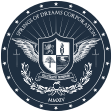
There is an immediate global need to address the challenges of STEM (science, technology, engineering and mathematics) education, as well as STEAM (which includes art) and STEMM (which includes manufacturing). In this context, teaching represents a notable fragment of these challenges, which remain as diverse as all of the aforementioned subject matters combined.
Over the years, the competitiveness of global education has produced many fruits of innovation, which collectively have benefited the entire global community. However, it also serves as an indicator for nations to measure and compare their standing, along with their notable advances and impact on the international community.
If aerospace engineering is envisioned to be divided into two major and overlapping branches — aeronautical and astronautical — teaching general engineering practices leading toward a myriad of specializations within the aerospace sector would appear to be a fundamental step for future progress. Yet, historically, teaching complex subjects has been an indestructible barrier for many educators.
Teaching aerospace engineering is a convoluted task. The complexity becomes significantly elevated when students struggle with basic mathematics, science and technology skills. Today, many students around the world struggle with these specific skills. However, the effects of shortcomings in these disciplines are substantial for U.S. students and could adversely affect the position of the United States as one of the leading countries in aerospace engineering.
Regardless of subjects in STEM, STEAM or STEMM, there needs to be a national recognition that education involves two elements: teaching and learning.
Traditionally, a common vision about teaching is centralized around educators. Hence, for many, the general perceptions of lectures, lessons and workshops revolve solely around the instructor. An alternative approach to modernize teaching endeavors is to focus on the learners, a practice known as learner-centered education.
Walking away from old traditions can be rather arduous for many educators. Nonetheless, teaching in the Information Age requires adopting new teaching practices that constantly make adjustments to an infinite knowledge domain and transfer that knowledge to new learners.
Once an educator understands that student populations consist of different types of learners, it becomes readily apparent that lesson plans have to be adapted for each of them.
Broadly, learners can be divided into three categories:
• Auditory learners, who process information best through hearing and speaking.
• Kinesthetic learners, who process information best through hands-on experience.
• Visual learners, who process information best by sight (graphics, films, reading materials, etc.).
Teaching efforts in aerospace engineering need to encompass a variety of approaches to cover the entire aerospace learner population across these three categories.
Until recently there were a limited number of publications available on learner-centered education and aerospace engineering. However, through a joint effort between our organization and the University of Arizona, new opportunities have emerged. “Aeronautical Engineering and Aerospace Engineering: A Learner Centered Teaching Perspective in Higher Education,” published in the Journal of College Science Teaching under the direction of National Science Teachers Association, highlights teaching practices of aerospace engineering within a learner-centered education environment.
With additional educators adopting a focus on learners in their aerospace teaching, there is an abundant amount that can be done above and beyond current practices to engage students, from kids’ rocketry to “Design, Build, Fly” competitions.
During the Aerospace Systems and Technology (ASAT) Conference in May, sponsored by the Southern California-based Orange County Section of the American Institute of Aeronautics and Astronautics, one of the discussions dealt with the challenges of teaching aerospace engineering in the United States. Learner-centered education can be part of the solution, allowing students to learn in unprecedented ways. By empowering them and encouraging them to step into the communications arena, the foundation for future aerospace leaders and engineers is chiseled. During the ASAT conference, the first Gohardani Presentation Award in Aeronautics and Aerospace encouraged that specific type of empowerment.
An investment in education is a prerequisite for maintaining U.S. competitiveness for future generations. Such an investment does not necessarily result in solely national accomplishments but can easily extend beyond national borders to benefit all of mankind.


Amir S. Gohardani and Omid Gohardani
Learner-centered Education in Aerospace Engineering

NEWS MEDIA ARTICLE

Any opinions, findings and conclusions expressed in this article are those of the authors only and do not necessarily reflect the corporate views of any organization with which they are affiliated.